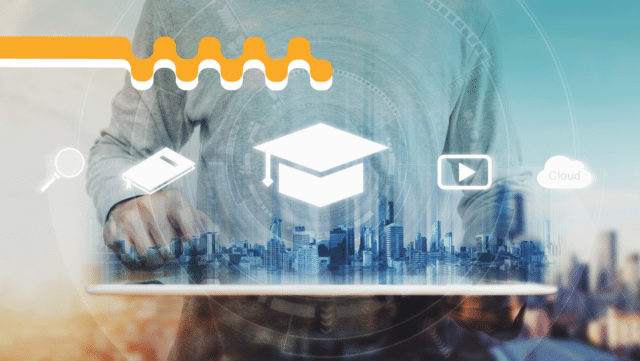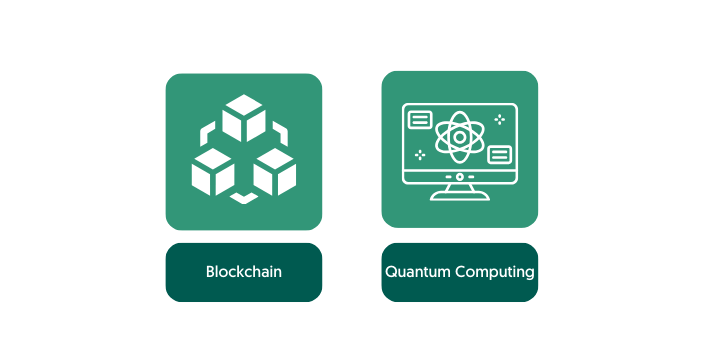The the educational sector is undergoing a profound transformation, one driven by the relentless advancement of technology. This digital revolution has not only changed the way we access information but has also fundamentally reshaped the very structure and approach of modern universities. We will delve into the pivotal role that technology plays in empowering education, with a specific focus on the key technologies that are shaping modern universities and e-learning institutions.
Table of Contents
- Key Technologies Shaping Modern Education
- Digital Content and Open Educational Resources (OER)
- Data Analytics and Student Insights
- Cybersecurity and Privacy Concerns
- Accessibility and Inclusivity
- Future Trends and Emerging Technologies
- Challenges and Considerations in the Digital Era
- Embracing the Digital Horizon
Key Technologies Shaping Modern Education
The landscape of education is being dramatically reshaped by a host of innovative technologies. This chapter explores some of the pivotal technologies that are driving the transformation of modern education and how they are revolutionizing the learning experience.
Learning Management Systems (LMS)
The Significance of an Efficient LMS
Learning Management Systems (LMS) have evolved into the linchpin of contemporary education. They serve as the nerve center for course management, consolidating resources, assignments, assessments, and facilitating seamless communication between students and instructors. An efficient LMS is indispensable for the smooth operation of online learning, ensuring that educational resources are accessible and organized.
A Diverse Landscape of LMS Platforms
The realm of LMS platforms is diverse, offering a rich array of features and functionalities. Universities and e-learning institutions have a multitude of options to choose from, tailored to their specific needs. Some of the popular LMS platforms include Moodle, known for its open-source flexibility; Canvas, renowned for its user-friendly interface; as well as proprietary systems such as Blackboard and Brightspace, each offering unique advantages and capabilities.
Online Collaboration Tools
Fostering Student and Teacher Interaction
Online collaboration tools have ushered in a new era of interaction between students and educators. Video conferencing platforms like Zoom and Microsoft Teams have transcended geographical boundaries, enabling real-time discussions, virtual office hours, and collaborative projects. These tools bridge the physical gap, fostering engagement, and fostering a sense of community among learners.
Empowering Virtual Classrooms and Group Projects
Platforms such as Google Workspace for Education and Microsoft 365 for Education have made virtual classrooms and group projects more accessible and effective. These tools facilitate seamless teamwork, document sharing, and simultaneous editing, making remote collaboration a breeze. The integration of cloud-based applications ensures that students and faculty can work together seamlessly, regardless of their physical locations.
Artificial Intelligence (AI) and Machine Learning
Tailoring Learning Experiences
Artificial Intelligence (AI) and Machine Learning (ML) algorithms have ushered in a new era of personalized learning experiences. By analyzing individual learning patterns, these technologies provide tailored content recommendations. Adaptive learning platforms like Khan Academy and Duolingo adapt the pace of instruction to the learner’s progress, ensuring a more effective and engaging educational journey.
Predictive Analytics for Student Success
Predictive analytics leverage historical data to identify students at risk of falling behind. Universities can intervene early by offering additional support and resources to ensure student success. By pinpointing potential challenges, institutions can provide targeted assistance, ultimately improving retention rates and academic outcomes.

Enhancing University Education with AI-Driven Transcription & Subtitling
Learn moreVirtual Reality (VR) and Augmented Reality (AR)
Creating Immersive Learning Environments
Virtual Reality (VR) and Augmented Reality (AR) technologies have unlocked the potential for immersive learning environments. Students can step into historical sites, conduct scientific experiments, or practice surgical procedures in a digitally simulated world. These experiences go beyond traditional learning methods, enhancing comprehension and long-term retention of knowledge.
Applications in Specialized Fields
In specialized fields like science, engineering, and medical education, VR and AR offer invaluable tools for hands-on training and experiential learning. Students can virtually dissect specimens, design architectural structures, or simulate complex engineering projects in a safe and controlled digital space. These technologies are revolutionizing education in these disciplines, offering a level of practical experience previously unattainable in traditional classrooms.
As technology continues to advance, these key technologies are at the forefront of reshaping education, making it more accessible, engaging, and effective than ever before. Universities and e-learning institutions that embrace these innovations stand to provide their students with unparalleled educational experiences that prepare them for the challenges of the future.
Digital Content and Open Educational Resources (OER)
Importance of accessible digital content
Digital content and Open Educational Resources (OER) democratize education by providing accessible, cost-effective materials. They reduce financial barriers for students and promote inclusivity in learning.
OER platforms and their benefits
OER platforms like OpenStax and MIT OpenCourseWare offer a wealth of free educational materials, from textbooks to multimedia resources. Universities can integrate these resources into their curriculum, lowering costs and expanding access.
Promoting affordability and inclusivity
By adopting OER, universities can take significant strides toward reducing the financial burden on students and fostering a more inclusive learning environment where all have access to quality educational resources.

Technologies of Today’s University Experience: Navigating the Digital Learning Landscape
Learn moreData Analytics and Student Insights
The role of data in educational decision-making
Data analytics provide universities with valuable insights into student performance and engagement. Informed decision-making based on data can lead to more effective teaching methods and improved student outcomes.
Predictive analytics for identifying at-risk students
Predictive analytics help identify students who may be struggling academically or at risk of dropping out. Early interventions can be implemented to provide targeted support and prevent academic setbacks.
Improving curriculum and teaching methods based on data
Analyzing data on student performance can inform curriculum adjustments and instructional strategies, ensuring that education remains relevant and effective in a rapidly changing world.
Cybersecurity and Privacy Concerns
Protecting student data and sensitive information
As universities embrace technology, safeguarding student data and sensitive information becomes paramount. Robust cybersecurity measures are essential to protect against data breaches and privacy violations.
Strategies for preventing cyberattacks
Universities must employ proactive cybersecurity strategies, such as regular security audits, staff training, and implementing strong access controls, to thwart cyberattacks that could compromise the integrity of educational systems.
Compliance with data privacy regulations
Ensuring compliance with data privacy regulations, such as GDPR and HIPAA, is essential to maintain trust with students and adhere to legal requirements regarding data protection.
Accessibility and Inclusivity
Ensuring technology is accessible to all students
Universities should prioritize accessibility in their digital platforms and content, ensuring that all students, including those with disabilities, can fully participate in online learning.
Assistive technologies for students with disabilities
The adoption of assistive technologies like screen readers, speech recognition software, and captioning services can make educational materials and platforms accessible to students with various disabilities.
Promoting diversity and inclusion in online learning
Embracing diversity and inclusion in online learning environments enriches the educational experience for all students, fostering a more equitable and supportive community.
Future Trends and Emerging Technologies
In the rapidly evolving landscape of modern education, staying ahead of emerging technologies is essential to ensure universities and e-learning institutions can provide the best possible learning experiences for their students. In this chapter, we explore some of the most exciting trends and technologies that are shaping the future of education.

Blockchain in Credential Verification
Blockchain technology has been making waves across various industries, and its potential to revolutionize credential verification is no exception. In the context of education, blockchain offers a secure, transparent, and tamper-proof way to verify academic credentials, certificates, and degrees.
How Blockchain Works in Credential Verification
Blockchain creates a decentralized and immutable ledger that records each educational achievement. This means that when a student completes a course or earns a degree, the information is stored in a secure, unchangeable database. This eliminates the risk of fraudulent credentials and allows employers and other educational institutions to instantly verify the authenticity of a person’s qualifications.
Benefits of Blockchain in Education
- Enhanced Trust: Blockchain ensures the integrity of credentials, fostering trust among employers, students, and institutions.
- Reduced Fraud: With tamper-proof records, fraudulent claims of academic achievements become nearly impossible.
- Global Recognition: Credentials stored on a blockchain can be easily accessed and recognized globally, making it easier for students to pursue opportunities worldwide.
Quantum Computing for Research and Simulations
Quantum computing is on the horizon as a groundbreaking technology that promises unprecedented computational power. Universities are at the forefront of leveraging quantum computing for complex research problems and simulations that were previously considered insurmountable.
Quantum Supremacy in Research
Quantum computers can process vast amounts of data and perform complex calculations exponentially faster than classical computers. This opens up new frontiers in fields such as physics, chemistry, and materials science. Researchers can simulate molecular structures, predict the behavior of particles, and explore quantum algorithms that could revolutionize cryptography.
Practical Applications in Education
- Drug Discovery: Quantum computing accelerates drug discovery by simulating molecular interactions and predicting potential drug candidates.
- Climate Modeling: Universities can use quantum computers to create highly accurate climate models, aiding in climate change research.
- Optimization Problems: Quantum algorithms can optimize resource allocation, benefiting educational institutions’ operations.
Ethical Considerations in AI and Technology Adoption
As universities increasingly integrate AI into their educational systems, it is imperative to address ethical concerns related to data privacy, bias, and transparency in algorithmic decision-making.
Ethical Challenges in AI Adoption
- Data Privacy: Safeguarding students’ and faculty members’ data is paramount. Universities must implement robust data protection measures.
- Bias and Fairness: AI systems can inherit biases from their training data, leading to discriminatory outcomes. Ethical AI design and continuous monitoring are necessary to mitigate bias.
- Transparency: Institutions should ensure that AI-driven decisions are transparent and explainable. Understanding how AI makes decisions is critical for building trust.
Responsible AI Adoption Strategies
- Ethics Committees: Universities should establish ethics committees to oversee AI adoption and ensure compliance with ethical guidelines.
- Diversity in AI Development: Encouraging diversity in AI development teams can help identify and rectify biases.
- Ethical AI Education: Incorporating ethical AI courses into curricula can raise awareness and prepare future professionals to navigate the ethical challenges.
As we explore these future trends and emerging technologies in education, it is essential for universities and e-learning institutions to adopt a proactive stance, ensuring that these innovations are harnessed responsibly for the betterment of education and society as a whole. Embracing these technologies while addressing their associated challenges will shape the future of education in profound ways.
Challenges and Considerations in the Digital Era
As universities and e-learning institutions embrace the transformative power of technology in education, they also face a set of challenges and considerations that demand thoughtful planning and strategic solutions. In this chapter, we delve into some of the key challenges and considerations that must be navigated in the pursuit of an empowered digital education landscape.
Cost and Budget Constraints
The integration of advanced technologies into education undoubtedly comes with financial implications. Universities, whether public or private, must grapple with cost and budget constraints while endeavoring to provide a cutting-edge learning environment.
Strategies to Mitigate Cost Challenges
- Prioritization: Identify the most critical technology needs and allocate resources accordingly.
- Collaborative Partnerships: Explore partnerships with tech companies, research institutions, or government grants to share costs.
- Long-term Planning: Develop a comprehensive, long-term technology strategy that aligns with budget cycles.
Cost-Effective Technological Solutions
- Open Source Software: Utilize open-source software and platforms that offer powerful educational tools at a reduced cost.
- Cloud Services: Leverage cloud-based services for scalability and cost-effectiveness.
- Digital Resource Sharing: Encourage resource sharing among educational institutions to reduce individual costs.
Faculty Training and Adoption
The successful integration of technology into education heavily depends on faculty members who serve as the educators and mentors. Ensuring that educators are adequately prepared and willing to adopt these technologies is paramount.
Faculty Development Programs
- Continuous Training: Implement ongoing training programs to keep faculty updated on the latest technology trends and best practices.
- Peer Mentoring: Facilitate peer mentoring programs where tech-savvy educators assist their colleagues in adopting new tools.
- Incentives: Offer incentives and recognition for educators who excel in technology integration.
Overcoming Resistance
- Addressing Concerns: Listen to faculty concerns and address them, providing support and resources to alleviate apprehensions.
- Showcase Success Stories: Highlight the positive impact of technology on teaching and learning through real-life success stories.
Balancing Technology with Traditional Teaching Methods
While technology offers myriad advantages in education, it is vital to strike a harmonious balance between digital and traditional teaching methods. Recognizing that students have diverse learning needs is crucial.
Personalized Learning Pathways
- Hybrid Models: Implement hybrid models that combine in-person and online learning to cater to different learning styles.
- Adaptive Learning: Utilize adaptive learning platforms that adjust content and pace to individual students’ needs.
- Flexibility: Ensure flexibility in course delivery, allowing students to choose the mode of learning that suits them best.
Measuring Learning Outcomes
- Assessment and Evaluation: Develop robust assessment and evaluation methods to gauge the effectiveness of both technology and traditional methods.
- Feedback Loop: Continuously collect feedback from students and faculty to refine the balance between digital and traditional approaches.
By addressing these challenges and considerations proactively, universities and e-learning institutions can successfully harness the potential of technology while maintaining financial stability, fostering faculty buy-in, and providing a well-rounded education that meets the diverse needs of their student body. In this dynamic digital era, striking the right balance between innovation and tradition is key to delivering excellence in education.
Embracing the Digital Horizon
The adoption of key technologies in modern universities and e-learning institutions is no longer a choice but a necessity. These technologies not only enhance the educational experience but also open doors to new possibilities in teaching and learning. By embracing innovation and considering the diverse needs of their students, universities can pave the way for a brighter future in the digital era of education.